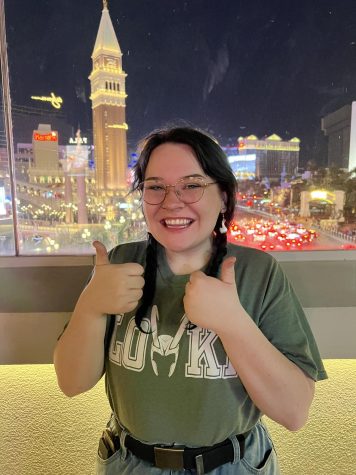Professors want to know why students are not showing up to in-person classes
To zoom or not to zoom?
Mar 18, 2021
With Zoom readily available, professors are finding it rare to teach to students in-person. Ever since John Carroll University transitioned back to in-person learning for the spring semester, faculty have reported that their in-person attendance has dwindled, leaving many professors to lecture to an empty, or nearly empty, classroom. The question remains: If students wanted to be on campus so badly last fall, why are they still joining from their isolated dorms?
“The transition from being completely virtual to on campus was a little bit of a challenge, but the month-long break helped with the adjustment,” Evan Richwalsky ’24 told The Carroll News. “From what I have seen, the professors that are teaching in-person have adjusted to having a hybrid classroom quite well.”
However, professors are seeing fewer and fewer students walk into their classrooms every day.
“We were told that there was an overwhelming desire that students wanted to return to the classroom,” David Young, an English professor at JCU, stated. “The spreadsheet I received at the beginning of the semester indicated that out of the 38 students that I have, six planned to be remote only, while the remainder were ‘in-person’ or ‘in-person (assumed).’ And currently, the environment does not reflect that.”
According to Young, he began to see the amount of in-person students drop off around week three of the semester. Many professors stated that teaching in-person after teaching in a completely virtual class can be uncomfortable and sometimes odd.
“I have days where I show up to campus and there are no students in the classroom, and I am teaching to a large TV monitor in the backroom,” Young continued. “And when a single student may show up, I can tell how uncomfortable they feel being the only one in the classroom with the instructor, so it makes teaching all the more difficult because there are these divisions between the students. I have allowed my frustrations to slip into my teaching at times, and I need to be more cognizant of my own issues with the model the University implemented because it is not the fault of the students.”
However, faculty and on-campus students alike are wondering what is causing this leave of absence among students.
“I think the lack is simply down to the number of students that did not move in this semester and also the convenience that Zoom can have for some students, especially ones that might have class attendance issues anyway,” Richwalsky stated. “It’s quite easy for a student in this Hyflex model to wake up one minute before class and instead of being late to an in-person class, just hop on Zoom. I prefer in-person learning because it is harder for me to focus and pay attention while learning virtually. Plus in virtual classrooms, it is harder to get to know people.
“I could say the administration has a role because of their lack of enforcement on attendance,” Richwalsky continued. “But, at the same time, professors could also be more clear about their attendance expectations. Our students are gaming the system a little too much, annoying their professors and peers.”
“Part of it is convenience for sure. They like the comfort of their room,” Kyle O’Dell, senior director of student engagement, told The Carroll News. “I also heard that students may have back-to-back classes, and students may not have enough time to travel. I don’t think there was an overarching concern about the in-class experience. Every student has a different story and a different reason for doing it.”
O’Dell assured The Carroll News that the issue is not the fault of the professors themselves but that, “Students realized they can take their class anywhere.”
While some faculty have worried that the lack of in-person attendance could reduce the quality of education a student receives, professors and the administration alike are putting their best foot forward to teach both in-person and remote students.
“The quality of instruction in fall was really high,” O’Dell continued. “The professors have come a long way from when we first went online. I think that our professors are dedicated to giving our students a good experience and that can happen both in-person and remotely. I have confidence that people have done a great job online. It’s not on the professors.”
Editor’s Note: The Carroll News wants to hear from the students! If you would like to provide your perspective on in-person classes, please email Rachel Scully at rscully21@jcu.edu.













